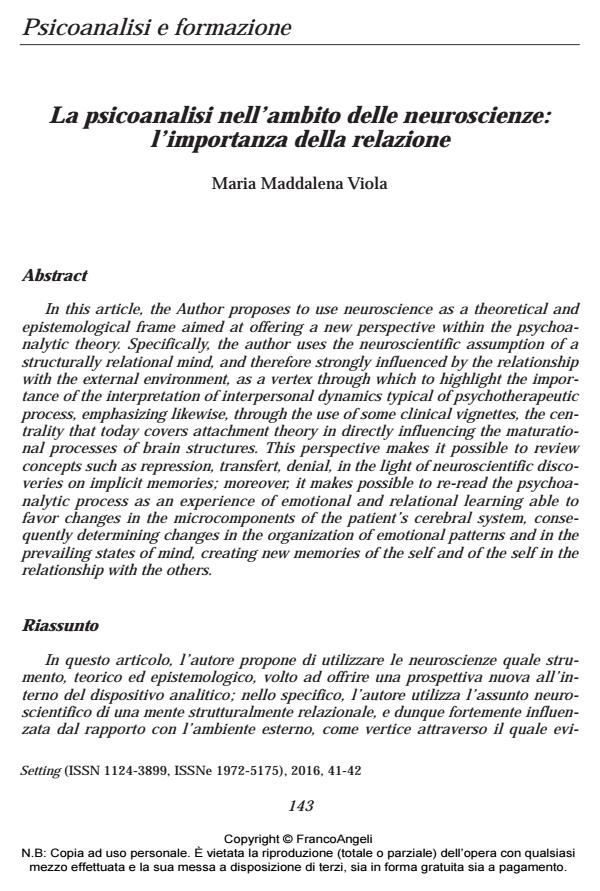La psicoanalisi nell’ambito delle neuroscienze: l’importanza della relazione
Journal title SETTING
Author/s Maria Maddalena Viola
Publishing Year 2018 Issue 2016/41-42
Language Italian Pages 10 P. 143-152 File size 422 KB
DOI 10.3280/SET2016-041006
DOI is like a bar code for intellectual property: to have more infomation
click here
Below, you can see the article first page
If you want to buy this article in PDF format, you can do it, following the instructions to buy download credits

FrancoAngeli is member of Publishers International Linking Association, Inc (PILA), a not-for-profit association which run the CrossRef service enabling links to and from online scholarly content.
In this article, the Author proposes to use neuroscience as a theoretical and epistemological frame aimed at offering a new perspective within the psychoanalytic theory. Specifically, the author uses the neuroscientific assumption of a structurally relational mind, and therefore strongly influenced by the relationship with the external environment, as a vertex through which to highlight the importance of the interpretation of interpersonal dynamics typical of psychotherapeutic process, emphasizing likewise, through the use of some clinical vignettes, the centrality that today covers attachment theory in directly influencing the maturational processes of brain structures. This perspective makes it possible to review concepts such as repression, transfert, denial, in the light of neuroscientific discoveries on implicit memories; moreover, it makes possible to re-read the psychoanalytic process as an experience of emotional and relational learning able to favor changes in the microcomponents of the patient’s cerebral system, consequently determining changes in the organization of emotional patterns and in the prevailing states of mind, creating new memories of the self and of the self in the relationship with the others.
Maria Maddalena Viola, La psicoanalisi nell’ambito delle neuroscienze: l’importanza della relazione in "SETTING" 41-42/2016, pp 143-152, DOI: 10.3280/SET2016-041006